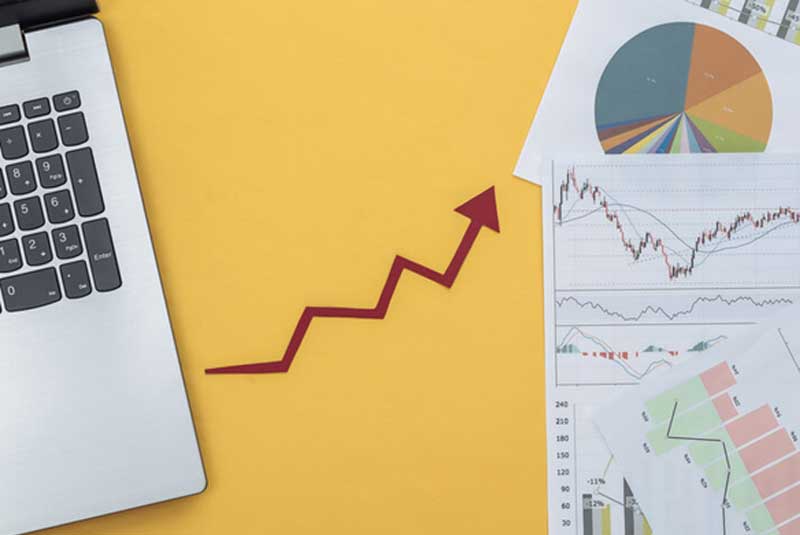Identifying trends in the futures market is crucial for traders aiming to maximize profits and minimize risks. There are several techniques and methodologies used to analyze and predict market trends, each with its own strengths and weaknesses. Here, we will discuss various techniques, including technical analysis tools, fundamental analysis, sentiment analysis, and the Elliott Wave Theory.
Technical Analysis
- Moving Averages
Moving averages are one of the simplest and most widely used tools to identify trends. There are two main types:
- Simple Moving Average (SMA): The average price over a specific number of periods.
- Exponential Moving Average (EMA): Gives more weight to recent prices, making it more responsive to new information.
- Trendlines
Trendlines are drawn on charts to help identify the direction of the market. An upward trendline is drawn by connecting the lows, while a downward trendline connects the highs.
- Relative Strength Index (RSI)
RSI is a momentum oscillator that measures the speed and change of price movements. An RSI above 70 is considered overbought, while below 30 is considered oversold.
- Moving Average Convergence Divergence (MACD)
MACD is a trend-following momentum indicator that shows the relationship between two moving averages of a security’s price. It is calculated by subtracting the 26-period EMA from the 12-period EMA.
- Bollinger Bands
Bollinger Bands consist of a middle band (SMA) and two outer bands that are standard deviations away from the SMA. They help determine whether prices are high or low on a relative basis.
Fundamental Analysis
- Economic Indicators
Economic indicators such as GDP, unemployment rates, and inflation figures can significantly impact futures markets. Traders analyze these to predict market trends.
- Supply and Demand
Understanding the supply and demand dynamics of the underlying asset can help in forecasting price movements. For example, in commodity futures, factors like weather conditions, geopolitical events, and production levels are crucial.
- Interest Rates
Interest rates set by central banks influence currency and bond futures. Higher interest rates can lead to stronger currencies and lower bond prices, and vice versa.
Sentiment Analysis
- Commitment of Traders (COT) Report
The COT report provides a breakdown of the positions held by commercial traders, non-commercial traders, and non-reportable traders. Analyzing this data can give insights into market sentiment.
- News and Social Media
Monitoring news and social media platforms can help gauge market sentiment and predict potential market movements based on public perception and reactions.
Elliott Wave Theory
The Elliott Wave Theory is a form of technical analysis that looks for recurring long-term price patterns related to persistent changes in investor sentiment and psychology.
- Basic Principles
The theory posits that markets move in a series of five waves in the direction of the main trend (impulse waves), followed by three corrective waves (a-b-c pattern).
- Wave Patterns
- Impulse Waves: Consist of five waves (1, 2, 3, 4, 5). Waves 1, 3, and 5 move in the direction of the trend, while waves 2 and 4 are corrections.
- Corrective Waves: Consist of three waves (A, B, C). They move against the trend of the impulse waves.
- Fibonacci Relationships
Elliott Wave practitioners often use Fibonacci retracement and extension levels to predict the extent of wave movements.
Volume Analysis
- Volume Trends
Volume analysis involves studying the trading volume to understand the strength of a price move. A price move accompanied by high volume is considered stronger.
- On-Balance Volume (OBV)
OBV is a momentum indicator that uses volume flow to predict changes in stock price. It shows the cumulative total of volume added or subtracted when the price moves up or down.
Pattern Recognition
- Chart Patterns
Chart patterns such as head and shoulders, double tops and bottoms, and triangles can help identify potential trend reversals and continuations.
- Candlestick Patterns
Candlestick patterns like doji, engulfing, and hammer provide visual cues about market sentiment and potential trend changes.
Quantitative Analysis
- Statistical Models
Quantitative analysis involves using statistical models to identify market trends. This can include linear regression, time-series analysis, and machine learning algorithms.
- Algorithmic Trading
Algorithmic trading uses computer algorithms to execute trades based on predefined criteria. These algorithms can identify trends and execute trades faster than human traders.
Identifying trends in the futures market requires a comprehensive approach that combines multiple techniques. Technical analysis tools like moving averages and MACD help identify current trends, while fundamental analysis provides context about underlying factors driving the market. Sentiment analysis and volume analysis offer additional layers of insight, and Elliott Wave Theory provides a framework for understanding market cycles. By integrating these methods, traders can develop a robust strategy for navigating the futures market.
Ready to start trading futures? Call US 1(800)454-9572 – Int’l (310)859-9572 email info@cannontrading.com and speak to one of our experienced, Series-3 licensed futures brokers and start your futures trading journey with E-Futures.com today.
Disclaimer – Trading Futures, Options on Futures, and retail off-exchange foreign currency transactions involves substantial risk of loss and is not suitable for all investors. Past performance is not indicative of future results. You should carefully consider whether trading is suitable for you in light of your circumstances, knowledge, and financial resources. You may lose all or more of your initial investment. Opinions, market data, and recommendations are subject to change at any time.
Important: Trading commodity futures and options involves a substantial risk of loss. The recommendations contained in this writing are of opinion only and do not guarantee any profits. This writing is for educational purposes. Past performances are not necessarily indicative of future results.
**This article has been generated with the help of AI Technology. It has been modified from the original draft for accuracy and compliance.
***@cannontrading on all socials.









